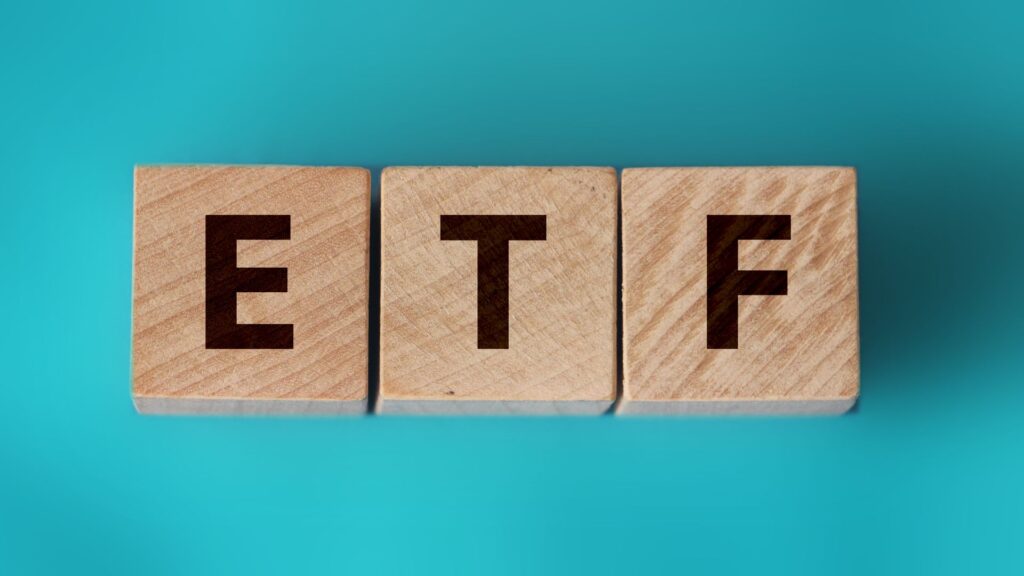
What Are ETFs?
ETFs are funds traded on stock exchanges that aim to track the performance of a specific index, sector, commodity, or asset class. For example, the SBI Nifty 50 ETF and the CPSE ETF are among the most popular ETFs in India. According to the Association of Mutual Funds in India (AMFI), the AUM of Indian ETFs surged from ₹23,000 crores in 2016 to ₹6.64 lakh crores in 2024, representing exponential growth in just eight years.
Key Strategies for ETF Investments in India
- Index Tracking Strategy
- What It Is: Investing in ETFs that track major indices like Nifty 50 or Sensex.
- Example: SBI Nifty 50 ETF, which mirrors the performance of the Nifty 50 index.
- Why It Works: Provides broad market exposure with minimal costs.
- Thematic Investing
- What It Is: Focused investments in emerging sectors like renewable energy, technology, or infrastructure.
- Example: ICICI Prudential IT ETF targets the IT sector, leveraging its growth potential.
- Why It Works: Aligns with India’s growth themes, such as the Digital India initiative.
- Dividend Yield Strategy
- What It Is: Targeting ETFs composed of high dividend-paying stocks.
- Example: Bharat Bond ETF, which offers a fixed income-oriented approach.
- Why It Works: Suitable for investors seeking consistent returns.
- Debt ETF Strategy
- What It Is: Investing in ETFs that track government securities or bonds.
- Example: Bharat Bond ETF tracks high-quality government securities.
- Why It Works: Offers stability and safety compared to equity ETFs.
Benefits of ETFs in the Indian Stock Market
- Diversification:
ETFs like Nifty 50 or Sensex ETFs provide exposure to top-performing companies across sectors. - Cost-Effectiveness:
With expense ratios as low as 0.05%, Indian ETFs are far cheaper than actively managed mutual funds. - Liquidity:
ETFs are traded on the NSE and BSE, offering flexibility for buying and selling during market hours. - Tax Efficiency:
Long-term capital gains (LTCG) tax on equity ETFs is only 10% on gains exceeding ₹1 lakh, making them tax-efficient.
Challenges of ETFs in India
- Low Retail Participation:
Unlike the U.S., where retail investors dominate the ETF market, 91% of ETF investments in India come from institutional players, such as EPFOPaytm Money. - Liquidity Issues:
Some ETFs in India suffer from low trading volumes, making it difficult to exit large positions. - Tracking Errors:
Deviations between an ETF’s performance and its benchmark can impact returns. - Limited Awareness:
Despite their advantages, ETFs are still underutilized by retail investors compared to mutual funds.
Analyzing Indian ETFs: Technical vs. Fundamental Approach
Technical Analysis:
- What It Is: Focuses on price movements and trading volumes using tools like charts.
- Best For: Short-term traders.
- Example: Using RSI or Bollinger Bands to identify trends in ETFs like ICICI Prudential IT ETF.
Fundamental Analysis:
- What It Is: Evaluates the underlying assets of an ETF based on economic, financial, and industry metrics.
- Best For: Long-term investors.
- Example: Analyzing the Bharat 22 ETF, which tracks a basket of blue-chip public sector companies.
Technical vs. Fundamental Analysis for ETF Investment
Technical Analysis:
Focuses on price movements and trading volumes using charts.
- Indicators to Use: Relative Strength Index (RSI), Moving Averages, Bollinger Bands.
- Application: Ideal for short-term traders analyzing trends in ETFs.
Fundamental Analysis:
Examines the underlying assets within the ETF, including financial ratios, economic data, and industry trends.
- Metrics to Analyze: P/E Ratio, Dividend Yield, Sector Growth.
- Application: Suitable for long-term investors looking for undervalued ETFs.
ETF Growth in India: Facts and Figures
The ETF market in India has seen exponential growth:
- 2004: ₹500 crores in AUM.
- 2023: ₹6.64 lakh crores in AUM.
- ETFs like CPSE ETF and SBI Nifty 50 ETF have driven this growth.
- The CAGR for ETFs in India from 2014 to 2024 is estimated at 70%, highlighting their rising adoption

Here is the graph showcasing the growth of Exchange-Traded Funds (ETFs) in the Indian stock market over the past 20 years (2004-2024), measured by Assets Under Management (AUM). The data highlights a significant increase, particularly from 2015 onward, reflecting growing investor interest and adoption of ETFs as a preferred investment vehicle.
Conclusion
ETFs in India have transitioned from being niche products to mainstream investment options. With growing awareness, supportive policies, and robust performance, ETFs are poised to play a pivotal role in wealth creation for Indian investors. Whether you’re a seasoned investor or a beginner, the Indian ETF market offers opportunities to align with your financial goals.
ETF investment offers a versatile approach to achieving financial goals, whether you’re a novice or an expert. With the right strategies, informed analysis, and awareness of challenges, ETFs can be a cornerstone of your portfolio.
References
Relevant Links and Resources


